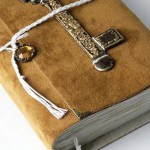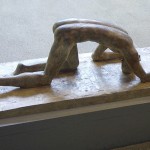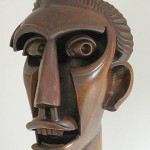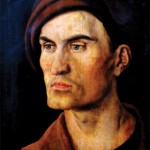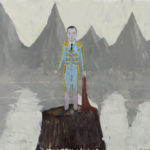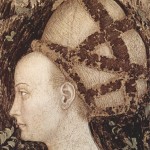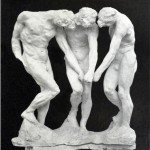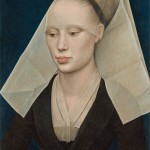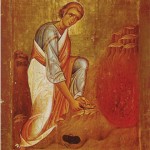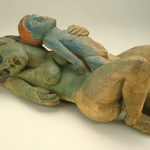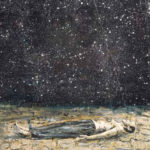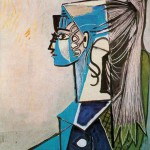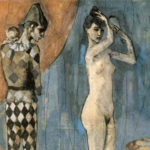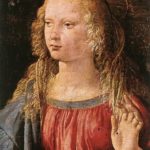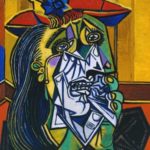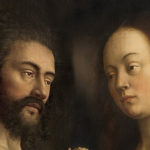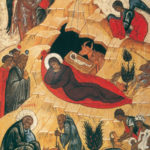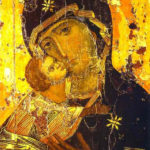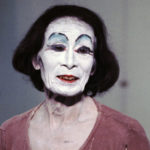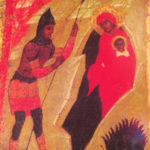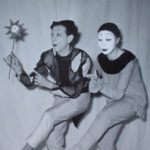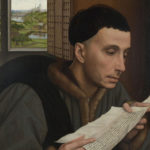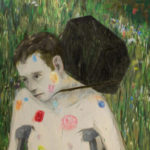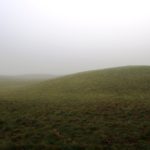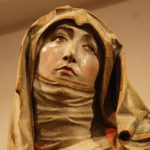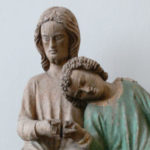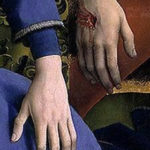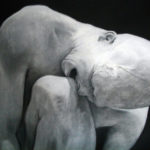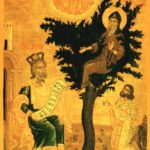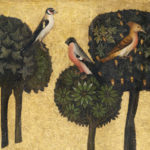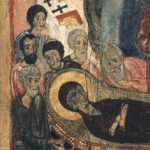He fashions peacock, dove, and parakeet, all the species and subspecies, microscopic and immense, yet is unable, no matter how hard he tries, to make the form he longs to see, the song he hears but cannot put outside himself, unable to compose the right sequence of notes, unable to make the form that will tell him who he is.
He traces his hand, his foot, in the sand. Lying on his back, reaches over his chest with a stick, traces his entire body there then stands, but it does not move, unable to make a form like himself that also breathes. The water erasing it like an encouraging teacher at first, saying, try, try again, then mocking.
Destroying this drawing and that. All around the island, in the wet sand and dry, sketches and more sketches, pages in messy piles under the trees, floating on the lakes, clay models on the riverbanks, countless mud statues, all of them false. Fabricated then abandoned, revised, fabricated anew then abandoned again. Clumsy or elegant, it doesn’t matter. The debris is everywhere and the animals are multiplying faster than he can keep up, all of it not what he wants to see.
He cannot find a way to put out into the world the form he cannot not see. Bound by this need more visceral than if his legs were bound by leather straps tight on his body, digging in. If he walks to the left it is there. If he walks to the right it is with him. This formless thing demanding a form and he cannot get it right. Draft after draft after draft.
“We had such high expectations for you!” he hears the waves say. Sometimes he thinks it is the chorus of animals, donkeys and macaws, jealous that he is not satisfied with them. “Why are you despondent?” the robin asks, “Look at my wings!” and the ant, “Look at my diligence!” And he does look, trying to preserve what is left of hope, and does study his companions that are his successes and so near, but this does not solve the problem and brings no peace.
Out of respect, he has given all of them their individual names, zebra, koi, antelope. But the real name for each, the name he keeps to himself, is “Not-me.” You are Not-me. You also are Not-me. It is endless, the diversity of what is Not-me a torment, so that finally at one sunset at the close of one particular day, the remnant of hope impossible to revive, he denies his desire, denies whatever it is that pushes him to transcend who he is, to exceed all the animals and the plants and the stars, the sea and the dry land, all that he has already made, even though it is all, and he knows this, which is a mystery and confusing, that it is all undeniably good.
He imagines, instead, the pleasure of not being driven, and so formulates a different end to his loneliness and, taking the sharp blade, lies down thinking to end his life. It seems dignified. A gate to relief, perhaps even to happiness. But when he lifts the blade over his abdomen he fails again, unable to pierce himself, as if failure were endless, as if failure itself is what he is best at inventing, and finding that he lacks the necessary courage falls asleep hoping to never wake.
She comes to him in a dream so startling it wakes him and he sees that she is not a dream at all but is as real as the field mouse, the ostrich, the hen and hawk. For a long time they stare at each other without speech, motion, and he compares her to the elegance of the serpent and imagines her softness like the goose’s down. Seeing that she is unlike the other creatures he has made, he thinks her name will not be Not-me but perhaps Not Not-me, yet seeing that she is equal to himself, does not name her at all but asks, “What is your name?” and she replies “Eve.”
He wonders from where she comes. Wonders, since he has not made her, if there is a maker mightier than himself, one who, by implication, holds him in a deep understanding, his hunger clearly and intimately known by this other, as it has now been made visible in its answer, which causes him, as he stares at her, arm and leg and neck, to wonder if all the creatures in the sea and on the dry land and all the stars in the heavens that he thought he had made weren’t made by him at all, but rather by this other. And he desires to know this one, and names the maker he cannot see but whose work he sees, “God.”
Wilhelm Lehmbruck
Der Gestürzte, 1915/16
Plaster
“Der Gestürzte” by Wilhelm Lehmbruck in plaster by bodok2006 is licensed under CC BY 3.0 Unported / cropped from original



